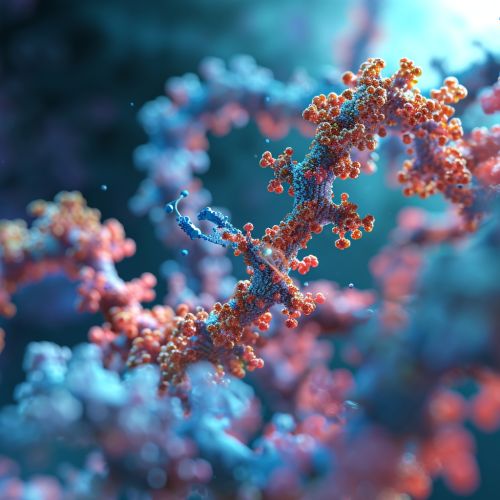Docking (Molecular)
Introduction
Docking in the context of molecular biology refers to the process of predicting the preferred orientation of one molecule to a second when bound to each other to form a stable complex. This process is often used in the field of drug design where the docking simulation can predict the strength of association or binding affinity between two molecules using scoring functions.
Molecular Docking
Molecular docking is a key tool in structural molecular biology and computer-assisted drug design. The goal of ligand-protein docking is to predict the position and orientation of a ligand (a small molecule) when it is bound to a protein receptor or enzyme. Docking plays a crucial role in the rational design of drugs.


Docking Approaches
There are two main types of docking approaches: rigid and flexible docking.
Rigid Docking
Rigid docking assumes that the ligand and the receptor are rigid bodies. This simplifies the docking problem to a six-dimensional (6D) search problem, where the three dimensions are translational and the other three are rotational.
Flexible Docking
Flexible docking, on the other hand, considers the flexibility of the ligand and/or the receptor during the docking process. This is a more realistic approach but also a more computationally intensive one.
Scoring Functions
Scoring functions are used in docking to predict the strength of the binding affinity between the ligand and the receptor. They are mathematical models that estimate the free energy change (ΔG) upon binding. There are three main types of scoring functions: force-field based, empirical, and knowledge-based.
Force-field Based Scoring Functions
Force-field based scoring functions estimate the binding affinity of a ligand-receptor complex based on the molecular mechanics force fields. They take into account the van der Waals interactions, electrostatic interactions, and sometimes the solvation energy and entropy change upon binding.
Empirical Scoring Functions
Empirical scoring functions are derived from a regression analysis of experimental binding affinity data of protein-ligand complexes. They typically include terms representing van der Waals interactions, hydrogen bonding, deformation penalty, and hydrophobic effect.
Knowledge-based Scoring Functions
Knowledge-based scoring functions are derived from the statistical analysis of protein-ligand complexes in the Protein Data Bank (PDB). They are based on the principle that similar protein-ligand interaction patterns are likely to have similar binding affinities.
Applications of Molecular Docking
Molecular docking has a wide range of applications in the field of drug design and discovery. It is used in the identification of potential drug candidates, the study of protein-protein interactions, the understanding of enzymatic reactions, and the prediction of metabolic products.
Limitations and Challenges
Despite its wide applications, molecular docking also has its limitations and challenges. The accuracy of docking results is highly dependent on the accuracy of the scoring functions and the docking algorithms. The flexibility of the ligand and the receptor is also a challenge in docking simulations.
See Also
Protein-ligand binding Molecular dynamics Pharmacophore modeling
